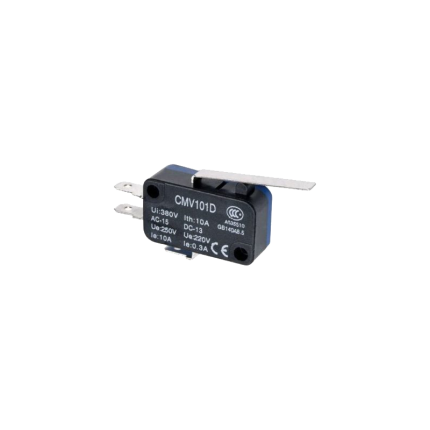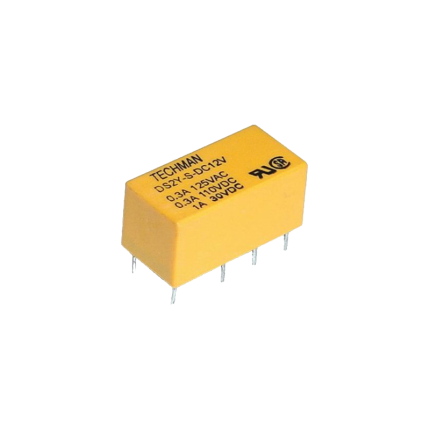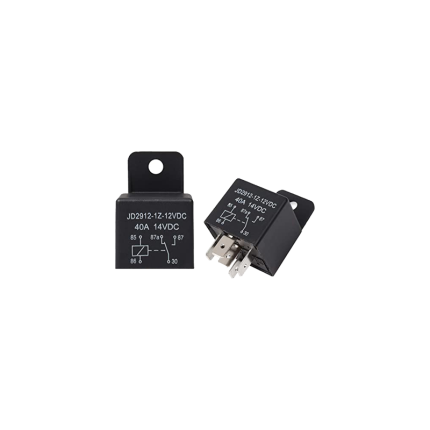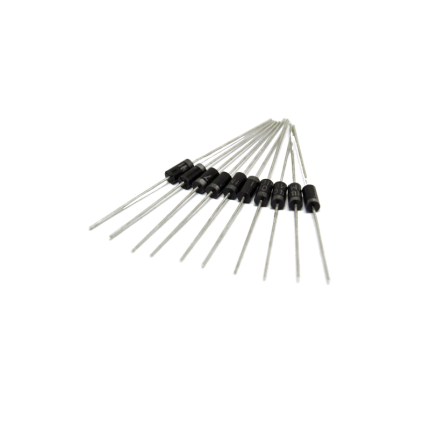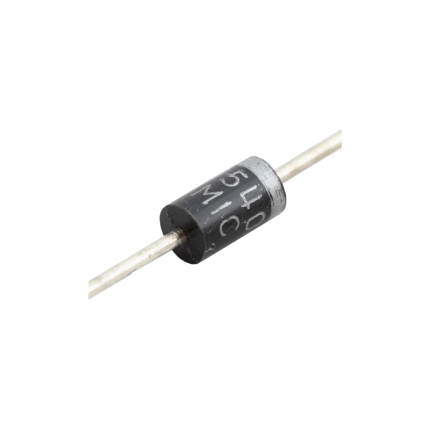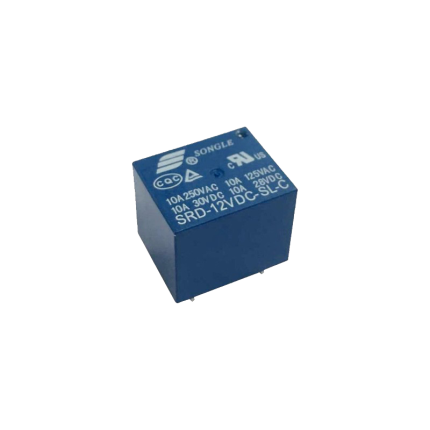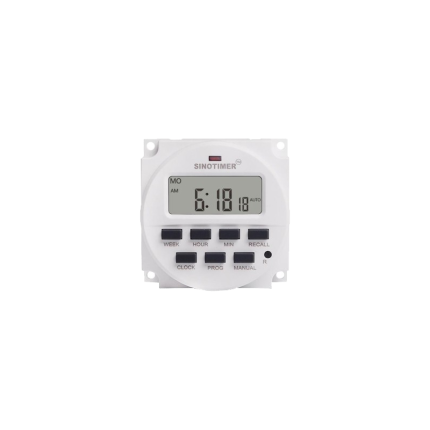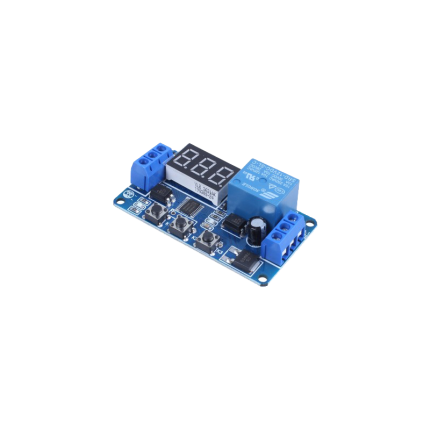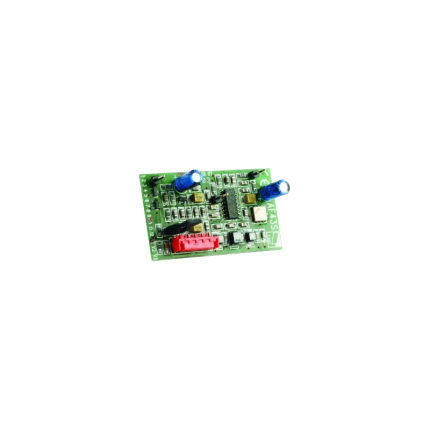Shop
Micro Limit Switch
Ship or pick up from our office.
Micro Limit Switch
A micro limit switch, often simply called a micro switch, is a type of electrical switch that's characterized by its small size and the precise, rapid action it takes when a minimal amount of force is applied to its actuator. It's designed to detect the presence or position of an object or the end of a mechanical movement. These switches are known for their:- High sensitivity: They require very little force to activate.
- Rapid response: The internal contacts "snap" open or closed very quickly, regardless of how slowly the actuator is pressed. This snap-action mechanism helps to reduce arcing and extends the switch's lifespan.
- Reliability: They are built to withstand millions of operations, making them durable for long-term use.
- Compact size: Their small footprint allows them to be used in applications where space is limited.
- Actuator: This is the external part that an object or mechanical component presses against. It can be a button, a lever (with or without a roller), a plunger, or other forms.
- Internal spring mechanism: This provides the "snap-action." When the actuator is pressed to a certain point (the "trip point"), the spring mechanism rapidly moves the contacts.
- Contacts: These are the electrical components that open or close the circuit. Micro switches usually have three terminals:
- Common (C): The input terminal.
- Normally Open (NO): This contact is open (no current flows) when the switch is unactivated and closes when the switch is actuated.
- Normally Closed (NC): This contact is closed (current flows) when the switch is unactivated and opens when the switch is actuated
- Household Appliances:
- Microwave ovens: To detect if the door is closed before operating.
- Washing machines: For door interlocks and water level detection.
- Refrigerators: To turn the light on/off when the door opens/closes.
- Printers: To detect paper jams or the position of paper.
- Automotive Industry:
- Car doors: To detect if a door is open or closed (e.g., for interior lights or security systems).
- Brake pedals: To activate brake lights.
- Seat belt mechanisms: To detect if a seat belt is fastened.
- Industrial Automation:
- Conveyor systems: To detect the presence of items or the end of travel for a belt.
- Robotic arms: For precise positioning and limit detection of movement.
- Machine safety guards: To ensure guards are correctly positioned before machinery operates.
- Elevators and hoists: To prevent over-travel and ensure proper door operation.
- Consumer Electronics:
- Computer mice and keyboards: For button clicks.
- Vending machines: For coin detection or jam detection.
- Medical Equipment:
- In various diagnostic tools and surgical instruments for precise control.
- Pin Plunger: A simple button-like plunger that is directly pressed.
- Roller Lever: Features a lever with a roller at the end, ideal for applications with sliding or rotating components.
- Hinge Lever: A simple lever arm that pivots to actuate the switch.
- Flexible Roller: Similar to a roller lever, but with a more flexible arm to accommodate irregular surfaces or wider ranges of motion.
- Spring Plunger: A plunger supported by a spring, allowing for a certain degree of "overtravel" beyond the actuation point without damaging the switch.
Mercury Level Switch
Ship or pick up from our office.
Mercury Level Switch
A mercury level switch is a type of electrical switch that uses a small amount of liquid mercury to open or close an electrical circuit based on its position or the level of a liquid. Essentially, the mercury acts as a conductive bridge between electrical contacts. How it Works The core component of a mercury level switch is a sealed glass or metal capsule containing one or more electrical contacts and a small, free-moving drop of mercury. When the switch or the liquid it's monitoring changes its tilt or level:- Tilt Switches: Gravity pulls the mercury to the lowest point within the capsule. If the tilt is sufficient, the mercury will flow to connect two or more contacts, completing an electrical circuit. Tilting it in the opposite direction moves the mercury away, breaking the circuit.
- Float Switches: In liquid level applications, the mercury switch is often integrated with a float mechanism. As the liquid level rises or falls, the float moves, which in turn tilts the mercury switch, causing the mercury to connect or disconnect the contacts.
- Displacement Switches: Some designs use a "plunger" that dips into a pool of mercury, raising the mercury level to contact an electrode and complete the circuit.
- Thermostats: In older thermostats, they controlled heating and cooling systems.
- Sump Pumps: Used to automatically turn on the pump when water levels rise.
- Appliances: Found in washing machines (for lid switches and load balancing), chest freezers (for lid lights), and some gas appliances like ovens and water heaters (as flame sensors).
- Automotive Industry: Previously used for trunk lid lights, ride control, and anti-lock braking systems.
- Industrial Settings: Utilized in liquid level control and safety systems.
- Roll Sensing/Tip-over Warnings: For construction equipment or other vehicles operating on uneven terrain.
- Durability and Reliability: The sealed contacts prevent oxidation, leading to a long lifespan.
- Quiet Operation: No abrupt snapping of contacts.
- No Contact Erosion: Mercury's liquid nature prevents the wear and tear seen in mechanical contacts.
- Spark-Free: They don't produce sparks when making or breaking circuits, making them suitable for hazardous environments.
- Toxicity of Mercury: This is the primary and most significant disadvantage. Mercury is a highly toxic substance, posing serious environmental and health risks if released.
- Environmental Concerns: Improper disposal of mercury switches can lead to widespread contamination. Due to these concerns, the use of mercury switches has been largely phased out in many applications, especially in new products.
- Sensitivity to Gravity/Orientation: While an advantage for tilt sensing, it makes them unsuitable for portable or mobile devices where orientation changes or vibrations could cause false readings.
- Limited Functionality: Most mercury switches provide only a simple on/off function.
Metal Case Diode Bridge KBPC5010
Ship or pick up from our office.
Metal Case Diode Bridge KBPC5010
The Metal Case Diode Bridge KBPC5010 is a specific type of bridge rectifier, a crucial electronic component used to convert alternating current (AC) into direct current (DC). It is widely employed in various power supply applications. Here's a breakdown of its key features and what each part of its name signifies: What is a Bridge Rectifier? A bridge rectifier is a circuit of four (or more) diodes in a specific configuration that allows for full-wave rectification. This means it efficiently converts both the positive and negative half-cycles of an AC input into a pulsating DC output. Compared to simpler half-wave rectifiers, bridge rectifiers are more efficient and provide a smoother DC output. KBPC5010 Explained- KBPC: This is typically a series designation for a family of single-phase bridge rectifiers with specific package styles.
- 50: This number indicates the maximum average forward rectified current (Io) the device can handle, which in this case is 50 Amperes (A). This high current rating makes it suitable for demanding applications.
- 10: This number typically refers to the voltage class, often indicating a maximum repetitive peak reverse voltage (VRRM) of 1000 Volts (V) (where '10' often means 10 x 100V). This high voltage rating allows it to handle substantial AC input voltages.
- Conversion: Converts single-phase AC to pulsating DC.
- Current Rating: Up to 50 Amperes (A) average forward current.
- Voltage Rating: Up to 1000 Volts (V) repetitive peak reverse voltage.
- Surge Current Capability: Often capable of handling high non-repetitive surge currents (e.g., 400A or 450A for a short duration), which is crucial for handling initial power-on transients.
- Low Forward Voltage Drop: Minimizes power loss and improves efficiency.
- High Reliability: Designed for robust performance in various environments.
- Mounting: Typically features through-hole mounting with a screw hole for chassis or heatsink mounting.
- Terminals: Often uses 0.25" (6.35 mm) Faston terminals for easy connection. Some variants (like KBPC5010W) might have wire leads.
- Operating Temperature: Wide operating junction temperature range, often from -40°C to +150°C.
- Power supplies: As a core component to rectify AC mains voltage into DC for electronic devices.
- Battery chargers: Converting AC power to DC for charging batteries.
- Motor control circuits: Providing DC power for electric motors.
- Industrial control systems: Used in various industrial applications requiring AC-to-DC conversion.
- Input rectifiers for variable frequency drives (VFDs).
Relay Mini PCB 8-Pin 1A
Ship or pick up from our office.
Relay Mini PCB 8-Pin 1A
A Relay Mini PCB 8-Pin 1A is a small, electronic switch designed to be mounted directly onto a Printed Circuit Board (PCB). It has eight pins for connections and its contacts can safely switch a maximum current of 1 Ampere (1A). Key Characteristics- Miniature Size: The "Mini" in its name indicates its compact dimensions, making it suitable for circuits where space is limited.
- PCB Mountable: It's designed for through-hole soldering onto a PCB, integrating seamlessly into electronic designs.
- 8-Pin Configuration: These pins serve various purposes, including connecting the coil (which activates the relay) and the switch contacts (which control the electrical load).
- 1A Current Rating: This is the maximum current that can safely flow through the relay's contacts when they are closed.
- Coil Voltage: The relay's coil operates on a specific DC voltage (e.g., 3V, 5V, 12V, 24V). Applying this voltage to the coil creates a magnetic field that mechanically opens or closes the contacts.
- Contact Configuration: Many 8-pin mini PCB relays are DPDT (Double Pole, Double Throw), meaning they have two sets of contacts, each with both normally open (NO) and normally closed (NC) positions. This allows for versatile switching operations.
- Isolation: Relays provide electrical isolation between the control circuit (coil) and the load circuit (contacts), enhancing safety and preventing interference.
- Remote Control Systems: Used to switch power to devices based on signals from a remote.
- Communication Equipment: For routing or switching signals in telecommunications and data networks.
- Automatic Control Systems: In automation processes to control motors, lights, or other actuators.
- Household Appliances: Found in various home electronics to manage power to different components.
- Automotive Systems: Employed in vehicles to control functions like lights, locks, and windows.
- Instrumentation and Measurement Devices: For precise signal routing and control in sensitive equipment.
Relay 5-Pin 40A
Ship or pick up from our office.
Relay 5-Pin 40A
A 5-pin 40A relay is an electromechanical switch commonly used in automotive and other applications. It allows a low-power electrical signal to control a higher-power circuit. The "5-pin" refers to the number of terminals it has, and "40A" indicates that its contacts can safely handle a maximum current of 40 amps. How it Works A relay essentially functions like a remote-controlled switch. It has two main circuits:- Control Circuit (Coil): This low-power circuit energizes an electromagnet inside the relay.
- Switched Circuit (Contacts): This high-power circuit is controlled by the electromagnet, either opening or closing connections to a device.
- Pins 85 and 86: These are the coil terminals. When a small current (typically 12V DC in automotive applications) is applied across these pins, it creates a magnetic field.
- Pin 30: This is the common terminal for the switched circuit. It's usually connected to the main power source (e.g., battery) through a fuse.
- Pin 87: This is the Normally Open (NO) contact. When the relay coil is energized, pin 30 connects to pin 87, allowing current to flow to the connected device.
- Pin 87a: This is the Normally Closed (NC) contact. When the relay coil is not energized, pin 30 is connected to pin 87a. When the coil is energized, this connection breaks.
- High-Current Control: They allow you to control high-current devices (like headlights, fuel pumps, or cooling fans) with a low-current switch. This protects the sensitive, smaller switches from being damaged by excessive current.
- Reduced Voltage Drop: By placing the relay closer to the high-current device and power source, you can use shorter runs of heavier gauge wire for the high-current circuit, minimizing voltage drop and ensuring the device receives adequate power.
- Safety: They isolate high-current circuits from the passenger compartment, enhancing safety.
- Automotive: Headlights, fog lights, horns, fuel pumps, electric cooling fans, power windows, central locking, and various aftermarket accessories.
- Industrial Control: Switching motors, solenoids, and other heavy-duty equipment.
- General Purpose: Any application where a low-power signal needs to control a higher-power circuit.
- Pin 85: Connect to ground (-).
- Pin 86: Connect to the positive (+) side of your control switch. When this switch is activated, it provides power to the coil.
- Pin 30: Connect directly to the positive (+) terminal of your battery, always through an appropriately sized fuse.
- Pin 87: Connect to the positive (+) terminal of the device you want to power when the relay is activated (Normally Open connection).
- Pin 87a: (Optional) Connect to a device you want to power when the relay is not activated (Normally Closed connection).
Diode 1N4007
Ship or pick up from our office.
Diode 1N4007
The 1N4007 is a very common and versatile silicon rectifier diode. It's part of the 1N400x series of general-purpose diodes, with the "7" indicating its specific voltage rating. Key Characteristics- Rectifier Diode: Its primary function is to convert alternating current (AC) into pulsating direct current (DC) by allowing current to flow in only one direction.
- High Reverse Voltage Rating: The 1N4007 can withstand a peak repetitive reverse voltage () of 1000V. This makes it suitable for high-voltage applications.
- Average Forward Current: It can handle an average forward current () of 1 Ampere (1A).
- Forward Voltage Drop: When conducting in the forward direction, it has a relatively low forward voltage drop () of approximately 0.7V to 1.1V. This voltage drop represents the power lost within the diode.
- Surge Current Capability: It can handle a non-repetitive peak surge current () of up to 30A for short durations, which is useful for handling initial power-on surges.
- Package Type: It typically comes in a DO-41 axial-lead package, which is a small, cylindrical plastic package with leads on both ends.
- Operating Temperature Range: It operates reliably over a wide temperature range, typically from -55°C to +175°C.
- Forward Bias: When a positive voltage is applied to the anode (P-side) and a negative voltage to the cathode (N-side), the diode is forward-biased. If the applied voltage exceeds the forward voltage drop (around 0.7V for silicon diodes), the diode conducts, allowing current to flow from anode to cathode.
- Reverse Bias: When a negative voltage is applied to the anode and a positive voltage to the cathode, the diode is reverse-biased. In this state, the diode acts like an open switch, blocking current flow. The 1N4007 is designed to withstand up to 1000V in this reverse-biased state before breaking down.
- Rectifier Circuits:
- Half-wave and Full-wave Rectifiers: Essential for converting AC power from the mains (like in household appliances) to DC power for electronic devices.
- Bridge Rectifiers: Used to convert the entire AC waveform into pulsating DC, achieving more efficient rectification.
- Power Supplies: Used for rectifying the AC input in power supply units to provide DC voltage to various components.
- Voltage Protection:
- Reverse Polarity Protection: Prevents damage to circuits if the power supply is connected with incorrect polarity.
- Freewheeling Diodes (Flyback Diodes): Protect sensitive components from voltage spikes generated by inductive loads (like relays, motors, and solenoids) when their magnetic field collapses.
- Voltage Spike Suppression: Helps to suppress transient voltage spikes that can occur due to switching events or lightning, safeguarding delicate electronics.
- Inverters and Converters: Used in various power conversion circuits.
- Current Flow Regulation: Can be used in simple current limiting or flow control applications.
Diode 1N5408
Ship or pick up from our office.
Diode 1N5408
The 1N5408 is a common general-purpose rectifier diode. It's designed to allow electric current to flow primarily in one direction, making it crucial for converting alternating current (AC) to direct current (DC). Think of it like a one-way valve for electricity. It belongs to the 1N540x series of power diodes, known for their ability to handle relatively high current and voltage. Here are its key characteristics and common uses: Key Features- High Reverse Voltage Rating: It can withstand a maximum repetitive reverse voltage () of 1000V. This means it can block high voltages when current tries to flow in the "wrong" direction.
- High Forward Current Capacity: It's rated for an average rectified forward current () of 3 Amperes (A). This indicates it can handle a significant amount of current flowing through it in the correct direction.
- High Surge Current Capability: The 1N5408 can handle non-repetitive peak forward surge currents () of up to 200A for short durations, protecting circuits from sudden power spikes.
- Low Forward Voltage Drop: When conducting, it has a relatively low forward voltage drop () of approximately 1.0V to 1.2V at its rated current. A lower voltage drop means less power is lost as heat.
- Standard Recovery: It's a "standard recovery" diode, meaning its switching speed is relatively slow compared to fast recovery diodes. This makes it suitable for power rectification at lower frequencies (like 50/60 Hz AC).
- DO-201 Package: It typically comes in a DO-201 axial-leaded package, which is a through-hole component with leads extending from both ends, allowing for easy mounting on circuit boards.
- Wide Operating Temperature Range: It can operate and be stored in a wide temperature range, typically from -65°C to +175°C.
- Power Supplies and Rectifiers: This is its primary application. It efficiently converts AC input voltage into pulsating DC, which can then be smoothed by capacitors to provide a stable DC output for electronic devices. This includes full-wave and half-wave rectifier circuits.
- Battery Chargers: Used to convert AC wall power into DC for charging batteries.
- Voltage Regulation Circuits: Helps in maintaining a stable output voltage by rectifying current.
- Protection Circuits: Its ability to block reverse current makes it useful for reverse polarity protection, preventing damage to sensitive components if the power supply is connected incorrectly.
- Freewheeling Diode: Used in inductive circuits (like those with relays or motors) to provide a path for stored energy to dissipate when the current is switched off, preventing voltage spikes that could damage other components.
- Voltage Doubler Circuits: Can be used in circuits designed to effectively double the input voltage.
Relay Mini PCB 5-Pin 10A
Ship or pick up from our office.
Relay Mini PCB 5-Pin 10A
A Relay Mini PCB 5-Pin 10A is a compact, electromechanical switch designed to be mounted directly onto a printed circuit board (PCB). It uses a small control voltage to switch a larger current, making it useful for isolating control circuits from power circuits or for switching higher-power loads with a low-power signal. Key Features and Specifications- Mini: This indicates its small physical size, making it suitable for applications where space is limited.
- PCB: This means it's designed for Printed Circuit Board mounting. Its pins are typically configured to be soldered directly into holes on the PCB.
- 5-Pin: These five pins usually consist of:
- Two pins for the coil: These are where the control voltage is applied to energize the coil and activate the relay.
- Three pins for the contacts: These typically include a common (COM) pin, a normally open (NO) pin, and a normally closed (NC) pin.
- 10A: This is the maximum current rating that the relay's contacts can safely switch. It means the relay is capable of handling up to 10 amperes of current through its switched contacts.
- Normally Open (NO): The contact is open when the coil is de-energized and closes when the coil is energized.
- Normally Closed (NC): The contact is closed when the coil is de-energized and opens when the coil is energized.
- Automotive applications: For controlling lights, motors, and other accessories.
- Home automation: Switching lights, appliances, and HVAC systems.
- Industrial control: In PLCs (Programmable Logic Controllers) and other control panels.
- Appliance control: In washing machines, refrigerators, and microwave ovens.
- DIY electronics projects: Where low-power signals need to control higher-power devices.
Digital programmable ON/OFF relay
Ship or pick up from our office.
Digital programmable ON/OFF relay
A digital programmable ON/OFF relay is an electronic switch that can be programmed to turn electrical devices on or off at specific times or intervals. It combines the fundamental switching functionality of a traditional relay with the advanced timing and control capabilities of a digital timer or microcontroller. This allows for automated control of various devices and systems without constant human intervention. How it Works At its core, a digital programmable ON/OFF relay operates similarly to a standard relay by using a small electrical current to control a larger electrical circuit. However, the "digital programmable" aspect introduces a sophisticated timing mechanism.- Digital Interface: Unlike mechanical or analog timer relays with physical dials, digital programmable relays feature an LED or LCD display and a keypad or buttons for programming. This allows users to set precise ON/OFF times, durations, and sequences.
- Microcontroller-Based: Most digital programmable relays use a microcontroller to manage the timing and control logic. This internal "brain" keeps track of time and executes the programmed instructions.
- Timing Functions: These relays offer a wide range of timing functions, including:
- On-delay: The relay turns on after a preset delay once activated.
- Off-delay: The relay turns off after a preset delay once deactivated.
- Interval timing: The relay stays on for a specific duration after activation.
- Cyclic operation: The relay repeatedly cycles ON and OFF at set intervals.
- Astronomic timing: Some advanced models can turn devices on/off based on sunrise and sunset times by calculating the solar position.
- Photocell integration: Others may include light sensors to activate based on ambient light levels.
- Memory Retention: Many programmable relays can store settings in memory even after a power interruption, ensuring that the programmed schedule is not lost.
- Programmable Timing: Offers precise control over when devices turn on and off.
- Automation: Reduces the need for manual operation, leading to increased efficiency.
- Energy Savings: Allows for optimization of energy usage by ensuring devices are only active when needed.
- Flexibility and Versatility: Can be configured for a wide array of applications due to various timing modes.
- Compact Design: Often more compact than systems using multiple hardwired timers and relays.
- Ease of Use: User-friendly interfaces for setting up programs.
- Reliability: Many are solid-state, meaning they have no moving parts, which increases durability and reduces noise compared to electromechanical relays.
- Home Automation: Controlling lighting, appliances, or other devices based on a preset schedule (e.g., security lights, garden irrigation).
- Industrial Automation: Managing machinery, conveyors, pumps, motors, and other equipment in factories or manufacturing facilities.
- Building Management Systems: Automated control of HVAC systems (heating, ventilation, air conditioning), lighting (e.g., streetlights turning on at dusk), and security systems.
- Commercial Applications: Used in vending machines, amusement equipment, and commercial appliances.
- Agriculture: Controlling irrigation pumps or greenhouse lighting.
- Security Systems: Activating alarms or security lights at specific times or in response to sensors.
Programmable timer relay
Ship or pick up from our office.
Programmable timer relay
A programmable timer relay is an electronic device that combines the functions of a timer and a relay, allowing users to set specific time delays for switching electrical circuits on or off. Essentially, it acts as an automated switch that operates based on pre-programmed time intervals. This enables the automation of various processes and equipment across a wide range of applications. How it Works Programmable timer relays incorporate internal circuitry (often microcontrollers or digital logic chips) that allow for precise timekeeping and control. Here's a general overview of how they function:- Control Signal: The programmable timer relay receives an input or "trigger" signal, which initiates the timing process. This signal can come from a switch, sensor, or another control device.
- Timing Mechanism: Once the signal is received, the internal timing mechanism begins to count down or up based on the programmed parameters.
- Delay Period: During this delay, the relay's contacts remain in their initial state (either normally open or normally closed).
- Contact Switching: Once the programmed delay period elapses, the relay's contacts change state, either closing to allow current to flow or opening to interrupt it.
- Maintaining State & Resetting: The relay maintains its new state until the input signal is removed, or a reset function is triggered. Programmable relays offer various timing modes, such as:
- On-delay: The relay activates after a set delay once the input signal is applied.
- Off-delay: The relay deactivates after a set delay once the input signal is removed.
- Interval: The relay activates for a set period and then deactivates.
- Cyclic: The relay repeatedly alternates between on and off states for specified durations.
- Industrial Automation: They control the sequencing of machinery, conveyor belts, pumps, and other equipment in manufacturing processes, ensuring precise timing and preventing system overloads.
- Lighting Control: Used in homes, commercial buildings, and street lighting to turn lights on and off at specific times or based on ambient light levels, optimizing energy consumption and security.
- HVAC Systems: Regulate fan operations, compressor cycles, and defrost cycles in heating, ventilation, and air conditioning systems to maintain desired temperatures and reduce energy use.
- Security Systems: Implement delays for door locks, alarm systems, and surveillance cameras, allowing for controlled access and scheduled activation/deactivation.
- Pump Control: Manage water pumps, sewage pumps, and sump pumps, ensuring they operate only when needed, which conserves water and prevents pump damage.
- Home Automation: Automate various household appliances like irrigation systems, washing machines, and dishwashers.
- Vehicle Systems: Control functions like intermittent windshield wipers and turn signals.
- Versatility and Customization: They can be programmed for various timing functions and sequences within a single unit, offering great flexibility for diverse applications.
- Energy Savings: By automating on/off cycles and ensuring equipment runs only when necessary, they help reduce energy consumption and costs.
- Increased Efficiency: They enable automated control of equipment and processes, improving overall operational efficiency and reducing the need for manual intervention.
- Reduced Components and Wiring: By integrating multiple timing and switching functions into one device, they can replace several individual timers and relays, simplifying wiring, reducing component inventory, and saving space in control panels.
- Cost-Effectiveness: For simpler automation tasks, they offer a more economical solution compared to full-fledged PLCs.
- Ease of Use: Many programmable timer relays feature user-friendly digital interfaces or software, making them relatively easy to configure without requiring extensive programming knowledge.
- Precise Time Control: They offer high temporal precision, with delays ranging from milliseconds to several hours.
- Troubleshooting: Integrated displays often provide alarm messages and I/O status, simplifying troubleshooting.
Delay relay 0.5 Sec – AC 24 V to DC 12 V
Ship or pick up from our office.
Delay relay 0.5 Sec - AC 24 V to DC 12 V
A "delay relay 0.5 Sec - AC 24 V to DC 24 V" is a time delay relay that is designed to:- Operate with a control voltage of 24 volts, which can be either Alternating Current (AC) or Direct Current (DC). This dual compatibility (AC/DC 24V) is a key feature, as many relays are specific to one type of current.
- Introduce a delay of 0.5 seconds before its contacts change state. This delay can be an "on-delay" (contacts close/open after 0.5 seconds when power is applied) or an "off-delay" (contacts remain closed/open for 0.5 seconds after power is removed), or other timing functions depending on the specific relay's design.
- Switch or control a separate circuit, which may be a 24V DC circuit. The "AC 24V to DC 24V" in the description refers to the relay's input power compatibility (it can be powered by either 24V AC or 24V DC) and its output capability (it's often used to control 24V DC loads). It is not a direct AC to DC converter for the load it's switching, but rather indicates its flexible control voltage. The relay itself doesn't convert the power; it merely switches it on or off after a delay. If the controlled circuit specifically requires DC, the relay's contacts would simply switch the 24V DC power to that circuit.
- Prevent false triggering: A brief fluctuation in voltage or a momentary signal might cause immediate activation in a standard relay. A short delay (like 0.5 seconds) can prevent such nuisance activations.
- Create timed sequences: In automated processes, certain steps may need to occur in a specific order with set delays in between. For example, a delay relay could ensure one motor starts before another or that a safety purge cycle completes before a furnace ignites.
- Control motor starts/stops: They can be used for "soft starting" motors, gradually increasing voltage to reduce inrush current, or for ensuring a motor has fully stopped before another action begins.
- HVAC systems: They prevent "short cycling" of compressors, which can damage the unit, by introducing a delay between successive starts.
- Lighting control: Ensuring lights stay on for a set period after activation (e.g., in stairwells) or controlling emergency lighting.
- Security systems: Providing a brief delay before an alarm triggers, allowing authorized personnel to disarm the system.
- On-delay (Delay on Make): The most common type. The contacts change state only after the set time delay has elapsed after the control voltage is applied.
- Off-delay (Delay on Break): The contacts change state immediately when the control voltage is applied, but only return to their original state after the set time delay has elapsed after the control voltage is removed.
- Interval: The contacts change state immediately when the control voltage is applied, and then return to their original state after the set time delay.
- Repeat Cycle: The relay continuously cycles between on and off states with specific time delays as long as the control voltage is applied.
Delay relay 0.5 Sec – AC 24 V to AC 24 V
Ship or pick up from our office.
Delay relay 0.5 Sec - AC 24 V to AC 24 V
delay relay 0.5 Sec - AC 24 V to AC 24 V is a type of electrical relay that introduces a 0.5-second time delay in a circuit, specifically designed to operate with a 24-volt AC (Alternating Current) power supply. This means that when the control voltage (24V AC) is applied or removed, the relay's output contacts won't change their state immediately; instead, there will be a half-second pause before they do. Here's a breakdown of what each part of the description means:- Delay Relay (or Time Delay Relay/Timer Relay): This is a control device that, unlike a standard relay, incorporates a timing function. It's used to control an event based on a pre-selected time interval.
- 0.5 Sec: This specifies the duration of the time delay. In this case, it's a very short half-second delay. Time delays can range from milliseconds to hours or even days, depending on the relay.
- AC 24 V (Input/Control Voltage): This indicates the type and voltage of the power supply required to energize the relay's coil or internal control circuitry. "AC" means Alternating Current, and "24 V" is the nominal voltage.
- to AC 24 V (Output/Load Voltage): While not explicitly stated as "output," this implies that the relay is likely intended to switch a 24V AC load. This means the contacts within the relay are rated to handle 24V AC to control another part of the circuit or a device. It's important to note that the load voltage can sometimes be different from the control voltage, but in this specific phrasing, it suggests both are 24V AC.
- On-Delay (Normally-Open, Timed-Closed - NOTC): The most common type. When the control voltage is applied, the timing period begins. After 0.5 seconds, the output contacts close. The contacts remain closed as long as the control voltage is present.
- Off-Delay (Normally-Open, Timed-Open - NOTO): When the control voltage is applied, the output contacts close immediately. When the control voltage is removed, the 0.5-second delay begins. After this delay, the contacts open.
- One-Shot: Provides a single output pulse of a specified duration (in this case, 0.5 seconds) when triggered.
- Repeat Cycle: Alternates between ON and OFF states for defined durations, creating a repeating cycle. This particular relay with a fixed 0.5-second delay is less likely to be a multi-function repeat cycle unless it's just one setting within a programmable unit.
- Sequencing Operations: Ensuring one component starts or stops slightly after another in a controlled sequence.
- Motor Control: Providing a brief delay before starting a motor (e.g., for pre-lubrication pumps to stabilize).
- Safety Interlocks: Implementing a short delay to ensure certain conditions are met before an action can occur.
- HVAC Systems: Timing the activation or deactivation of fans, compressors, or other components.
- Conveyor Systems: Coordinating the starting or stopping of multiple conveyor belts to prevent material jams.
- Lighting Control: For example, a short delay before turning on a light in a specific area

